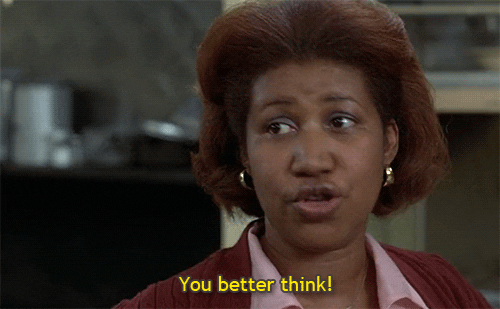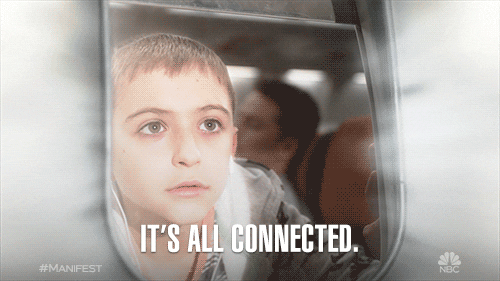Repeat after me: Diversity and inclusion isn’t just my job; it’s everyone’s job.
That is one of Patrice-isms, also known as a personal little nugget of wisdom, that I include in every training I run. In order for institutions to foster welcoming and supportive campus environments, everyone needs to speak the language of inclusion.
It’s not always easy. There are things that some people have done all their lives, and habits are hard to change. It takes intentional thought before it becomes second nature.

Many institutions host identity-specific programs during heritage months. That’s a nice start, but it’s not inclusive in supporting students throughout their entire collegiate experiences.
So, I’d like to offer you four ways to truly support underrepresented and/or historically marginalized students all year round.
4 Ways
1. Ask students how they are doing. Mean it and listen
Too often, when we ask people how they are doing, we expect a short response and then move on to the next thing.
Imagine you ask a cashier how their day is going. You’d probably expect them to simply respond, “I’m good.” But what if they began to unload all of the things happening in their life that aren’t good?
They, like many of your students, want to know that someone is listening and appreciates them.
Take the time to stop what you’re doing and tune in to your students. It’s important to remember that there are a lot of things that can trigger students (and your coworkers) in the current political climate, especially since we now get to see things unfold in real time via social media.
Create a space where your students feel like they can talk to you. Don’t be afraid to talk about things that are happening in the world; those impact students as well.
For example, have you thought about how media coverage on gun violence can impact student veterans or those who come from areas with high levels of gun violence? Or, have you considered how an international student might feel when there is political turmoil in their country?
A question that seems so simple can have a huge impact on students. Our campuses reflect the world we live in and student affairs professionals should be in tune with what’s going on.

If you aren’t into consuming standard TV news, find ways to learn about hot topics outside of social media. Some of my co-workers and I subscribe to the Skimm, which emails subscribers hot topics in a quick and easy daily format — for free. Giving yourself five minutes to skim through the news each day can change your approach to working with students.
2. Model inclusive behaviors
I felt the impact of mirroring behavior this summer during orientation. During one session, I introduced myself in front of a group of nearly 200 first-year students by saying, “My name is Patrice and I use she/her pronouns.”
After the session ended, the director of orientation popped in to say thank you. Introducing myself with my pronouns normalized and acknowledged pronoun sharing for my colleagues in the session.
One of the students who attended that session hadn’t been having the best time at orientation so far. But, when they got to our involvement session and heard every professional introduce themselves with their personal pronouns, they felt seen. How powerful is that?
So, in addition to telling students how to be inclusive, you should model that behavior. You can introduce yourself with your pronouns, provide your preferred name, and stop conversations to correct yourself or others. This will help encourage your students and other professionals to be authentic.
3. Be a visible ally
By “visible ally,” I mean someone who makes their allyship known without saying a single word.
This can be as simple as displaying training certificates. My institution has a large veteran student population and our Military & Veteran Resource Center provides the opportunity for staff and faculty to participate in Green Zone Training. I have my Green Zone certificate framed in my office for any student who stops by to notice.
I also display a Safe Zone sticker in my window to signal my goal of making the office a safe place for members of the LGBTQIA+ community.

A few other ways to make your allyship visible is to make sure your office is accessible for all students (including those with motor difficulties), show subtitles with all videos, include your pronouns in your email signature, and consider major holidays for minority religions when scheduling programs.
Consider also setting up meetings with departments that work with specific populations — such as cultural centers, veterans offices, first-generation support areas, and commuter offices. These professionals can help you be more thoughtful in your role.
4. Advocate for and create change when you can
Remember that you are in a position of power. Everyone has the potential to create incremental change no matter what their role is or where they fall on the hierarchy of the organizational chart.
Think about your current role and the things that fall under your purview.
If you oversee homecoming, consider changing your court titles from “king and queen” to “royalty” in order to make the tradition inclusive of all genders.
Work in a career center? Consider how your marketing addresses students who are attending a career fair and recommends attire. Our career resource center provides students a guide on what to wear to the career fair. We found ways to teach students how to dress professionally while still expressing their personalities and style.
I also encourage you to take a hard look at your programs and services, then consider what might be inhibiting students from interacting with your office. Things to look into include the cost of attending programs, accessing things physically, and the clothing that students are expected to wear.
There are ways to create change within your reach. I urge you to choose courage over comfort and challenge the status quo.

It is my hope that you are able to make changes on campus. Use your voice to elevate and support historically marginalized student groups and empower students to use their voices beyond the heritage months.
How do you lift up students 24/7/365? We’d love to hear your stories at @themoderncampus.





